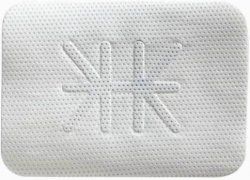What are the benefits of not having to obtain primary closure? Not having to obtain primary closure prevents the need for soft tissue augmentation in cases that may not have enough soft tissue for tension-free primary closure. In addition, by leaving the soft tissue where it is, the surgeon preserves the soft tissue contours and keratinized mucosa, allowing for improved esthetics. What are Cytoplast? dense PTFE membranes made of? 10025 non-expanded polytetrafluoroethylene (PTFE). May the Ti-250's be cut to fit a variety of defect sizes? Yes, the Ti-250's are designed so that it may be cut transversely across the titanium strut to fit a variety of defects. However, because the frame is laminated between two pieces of PTFE, care should be taken to not over-trim inside the laminated area. Over-trimming can cause de-lamination of the membrane. Do the Cytoplast titanium reinforced PTFE membranes have to be secured with screws or tacks? The titanium frame is a grade of titanium that has little or no memory, so it may be formed to the desired shape and will remain in that shape until mechanically altered. For this reason, screws or tacks are not always necessary if stability can be obtained by simply tucking the membrane 3-5 mm subperiosteally. Can unused portions of the titanium reinforced membrane be resterilized? No. The FDA clearly states these devices are single use only and may not be resterilized or reused. What is the shelf life of Cytoplast? titanium reinforced PTFE membranes? 4 years from the date of manufacture. The expiration date is printed on the box and on each individual membrane package. Have you ever had a confirmed allergic reaction to Cytoplast? titanium reinforced PTFE membranes? No; PTFE is inert and biocompatible. Which side of the Cytoplast? titanium reinforced membrane faces towards the soft tissue? The textured side is placed facing upwards towards the soft tissue and oral cavity while the smooth side faces down towards the bone. ;The textured side of the titanium-reinforced membranes provides the soft tissue with a larger surface area to “grip”.










